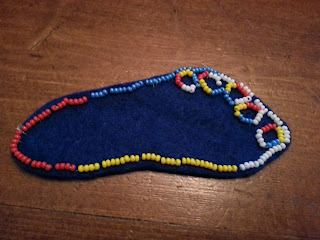I was going through old pictures
and I found these two
taken in 2013
over three years ago
when Moira and I sat in emergency
at the General hospital
thankful for our medical system,
for Tommy Douglas and universal health care.
Today I am mindful
that in 1876
visionary Indigenous leaders
negotiated hard to include
the Treaty Six medicine chest clause
conceptualizing universal health care as a Treaty right.
I wonder what our Tommy would think
of the Medicine Chest clause
or if he realized that universal health care
had already been made sacred
when the pipes were raised
and if we had accepted the gifts
of sharing this land as brothers, as sisters
our peoples' healthcare would have been
one hundred years ahead.
I wonder today what other sacred concepts
sacred gifts, sacred ways of being, sacred relationships
we are trying to re-create
which those visionaries of old
already set in place for us.

Note. On Father's Day, 2016, we met for supper
in Weyburn, Treaty Four Territory.
Moira, Victoria, and Tyler drove up from the farm at Macoun.
Arwen, Michael and I drove from Fort Qu'Appelle.
Afterwards, we had a little family photo shoot with TC Douglas
who is not only the Greatest Canadian, he is also Weyburn's most famous son,
(not to mention Keifer Sutherland's Grandfather, but that's a story for someone else's blog.)
Note. When I say "our Tommy" I do this with great pride.
Grandpa and Grandma Bailey called him by name.
Grandpa Bailey ran for the newly morphed NDP in Assiniboine
in that fear-crazed spring before the July Saskatchewan Doctors' Strike,
protesting the implementation of the "Saskatchewan Medical Care Bill".
1962 G.E. – June 18
Hazen Robert Argue ......................................................................................... Lib 7739
Lawrence Watson ............................................................................................. PC 7386
Cecil T. Bailey ................................................................................................... NDP 5153
Here's Tommy and my Moira,
back to where this blog post began.
I do wonder what our Tommy would think of the Medicine Chest Clause?




















































